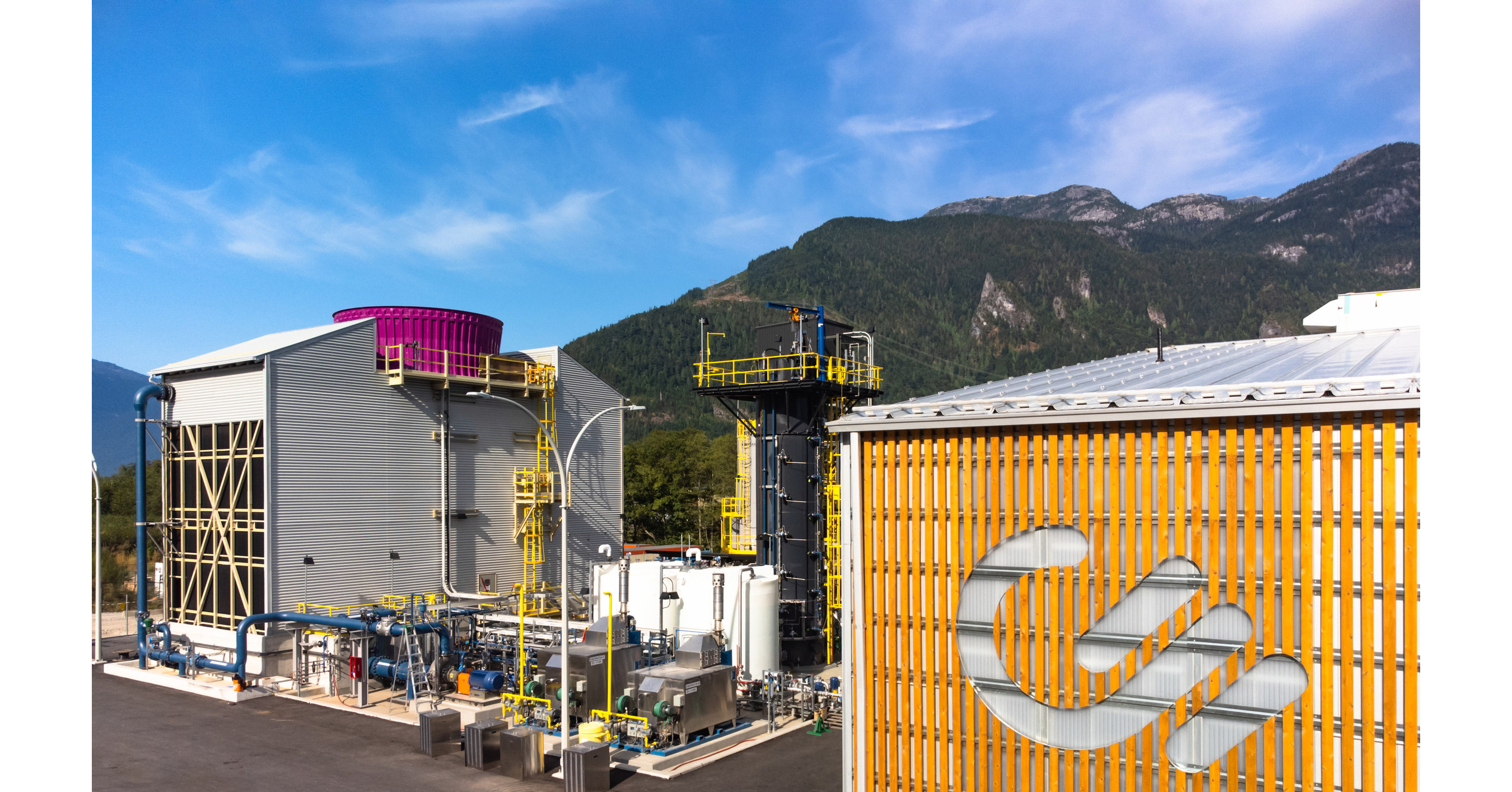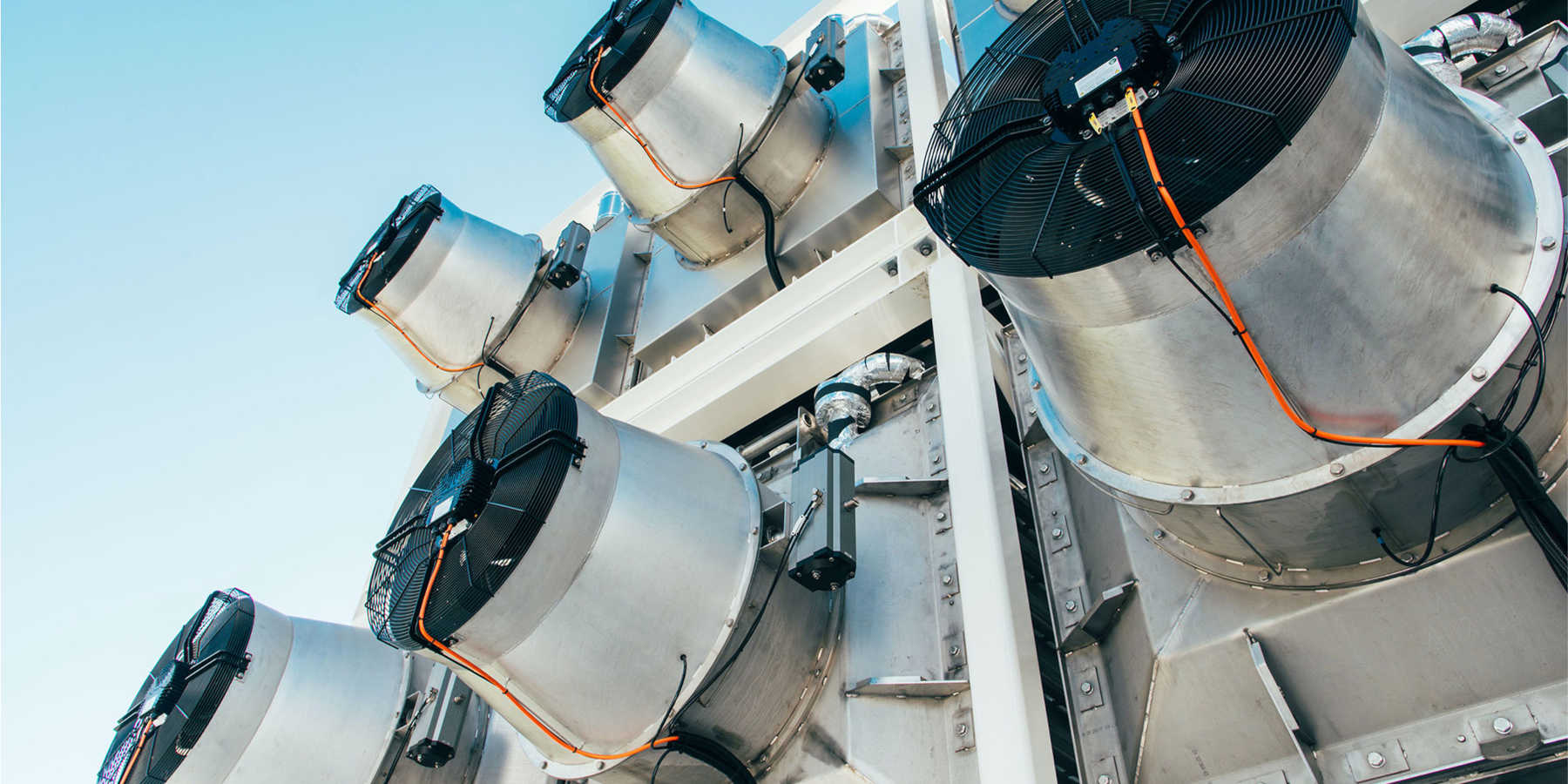
Canada just made history by launching the world’s first government-backed Direct Air Capture (DAC) offset protocol. This move not only strengthens the credibility of carbon removal markets but also positions the country as a leader in climate innovation.
With net-zero targets fast approaching, DAC is becoming a key player in global carbon reduction efforts. The new framework could unlock massive investments, drive technology adoption, and serve as a model for other nations looking to regulate carbon removal. Here’s why this protocol matters.

>> In Other News: New Funding for Carbon Capture Technology Will Break Down the Biggest Barrier to Adoption: Options
Creating a Stronger Carbon Credit Market
The business model for DAC relies heavily on selling carbon credits in voluntary markets. Companies aiming for net-zero status purchase these credits to offset their emissions. Major corporations, including airlines and tech firms, have already invested in DAC as part of their sustainability goals.
According to CDR.fyi, more than 1.6 million tonnes of DAC carbon credits have been bought so far, with an average price of $470 per tonne. The Canadian government’s new protocol strengthens this market by ensuring that every DAC credit meets high standards for permanence, transparency, and accountability.
By aligning with the International Standard Organization’s greenhouse gas verification requirements, Canada ensures that each credit represents a real, measurable, and lasting reduction in atmospheric CO₂. This level of credibility could boost investor confidence and expand the carbon credit market.
Setting Higher Standards for Carbon Offsets
Not all carbon offsets are created equal. Many programs, such as forestry credits, face issues like wildfires that can wipe out stored carbon. Canada’s DAC protocol eliminates this uncertainty by mandating that captured CO₂ be stored in underground geological formations for at least 100 years.
"The Government of Canada is committed to supporting innovative carbon management solutions, ensuring that our investments in carbon removal technologies drive both economic and environmental progress," said **Marc G. Serre, MP and Parliamentary Secretary to the Minister of Energy and Natural Resources".
The protocol also prohibits the use of captured CO₂ for enhanced oil recovery (EOR), a controversial practice where CO₂ is injected into oil fields to boost production. This rule ensures that DAC remains a true climate solution and not a loophole for extending fossil fuel use.
By maintaining strict storage requirements and independent verification, Canada is making DAC credits more credible, which could further increase adoption by businesses and governments worldwide.

A Step Toward Compliance Carbon Markets
Today, DAC credits are mostly used in voluntary markets, where companies buy offsets on their own. But Canada’s protocol could open the door to compliance carbon markets, where industries are legally required to offset emissions.
Globally, compliance markets like the EU Emissions Trading System and California’s Cap-and-Trade Program dominate carbon trading. If DAC becomes part of these regulatory frameworks, demand for these credits would skyrocket. Large emitters, including power plants and manufacturers, could be mandated to buy DAC offsets, leading to major investments in carbon removal infrastructure.
This shift would not only drive mass adoption but also help lower costs over time, making DAC a more accessible and scalable solution.
Direct Air Capture and the Net-Zero Mission
In 2024, global temperatures exceeded the 1.5-degree Celsius threshold for the first time. Reducing emissions alone isn’t enough anymore—we need active carbon removal to undo past damage.
DAC is one of the few solutions that can directly remove legacy emissions and help industries that are difficult to decarbonize, such as aviation and cement manufacturing. The Intergovernmental Panel on Climate Change (IPCC) has emphasized that carbon dioxide removal (CDR) technologies are essential for meeting global net-zero targets.
However, DAC remains an expensive and emerging technology. Without clear policies and government support, its growth has been slow. Canada’s protocol provides a structured path for scaling DAC, creating incentives for private and public investments.
Unlike nature-based solutions, which require specific land conditions, DAC facilities can be built anywhere with access to clean energy and underground storage. This flexibility makes it a crucial tool in global climate efforts.
Challenges and Opportunities for the Future
Despite its potential, DAC still faces major roadblocks. The cost of removing CO₂ currently ranges between $400 and $1,000 per tonne. To bring this down, governments and private sectors must step up with policy incentives, tax credits, and funding for research and development.
Scaling DAC will also require expanding renewable energy sources. The process is energy-intensive, so powering DAC plants with clean electricity is critical. Investments in geothermal, nuclear, and other low-carbon energy could make DAC a more sustainable solution.
"This provides a critical tool for a low-carbon future by decoupling emissions from their source," said Jonathan Wilkinson, Canada’s Minister of Energy and Natural Resources.
As Canada rolls out this protocol, feedback from industry leaders and scientists will be key to refining and improving its implementation. If done right, this framework could serve as a global model, accelerating DAC adoption worldwide.
The Big Picture: Canada’s Climate Leadership
With this move, Canada is making a bold bet on DAC as a cornerstone of its climate strategy. By creating a transparent, high-integrity carbon credit framework, the government is paving the way for investment, innovation, and international adoption.
The next few years will determine whether DAC can truly scale to meet its potential. But Canada’s leadership in setting rigorous standards could inspire other nations to follow, pushing DAC into the mainstream of climate policy.
As the world races to achieve net-zero, this protocol could mark the beginning of a new era in carbon removal, proving that DAC is not just a futuristic concept but a real, viable solution in the fight against climate change.
Subscribe to the newsletter
Daily decarbonization data and news delivered to your inbox
Follow the money flow of climate, technology, and energy investments to uncover new opportunities and jobs.
Latest issues
-
The Three-Continent Move That Redefines SAF
Wishing everyone a restful holiday season.🎄🎅🎁 Inside this Issue ✈️ Cathay Goes Global With SAF in Three-Continent Fuel Deal 🧪 Proton Ventures Partners With Barents Blue For Realization Of The Bar...
-
Can One Truck Fix Hydrogen’s Biggest Problem?
Inside This Issue 🚛 Alberta's Shared Truck Model Could Crack Hydrogen Adoption ✈️ ZeroAvia Completes Financing Round 🌾 Frontier And NULIFE Scale New Biowaste Carbon Removal Approach 🔥 WAGABOX® Of ...
-
North America’s Carbon Removal Year in Review: Winners, Losers, Surprises
Inside This Issue 🌎 North America's Carbon Removal Year in Review: The Deals, Policies, and Milestones That Shaped 2025 🚢 Hapag-Lloyd And North Sea Container Line Win ZEMBA Second E-Fuel Tender 🪨 ...
Company Announcements
-
ClimeFi Announces New 85,000 Tonne Procurement Round
In its latest procurement round, ClimeFi has enabled more than US$18m in durable carbon removal purchases across eight removal pathways: Biochar, Bioenergy with Carbon Capture and Storage (BECCS), ...
-
Vallourec, a world leader in premium seamless tubular solutions, and Geostock, a global specialist in underground storage of energy, have signed a Memorandum of Understanding (MoU) to strengthen th...
-
CMA CGM, DHL Step Up Ocean Freight Decarbonization with Biofuel Deal
DHL Global Forwarding and shipping group CMA CGM have agreed to jointly use 8,990 metric tons of second-generation biofuel to reduce emissions from ocean freight. The initiative is expected to cut...
-
Next-Generation Gas Turbine Control System For Thermal Power Plants Completes Functional Testing
Integration of Mitsubishi Power's control technology with Mitsubishi Electric's high-speed data processing technology Supports rapid load adjustments and diverse fuels including hydrogen Tokyo, ...